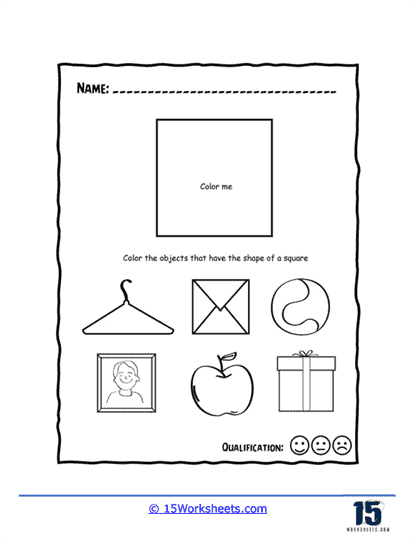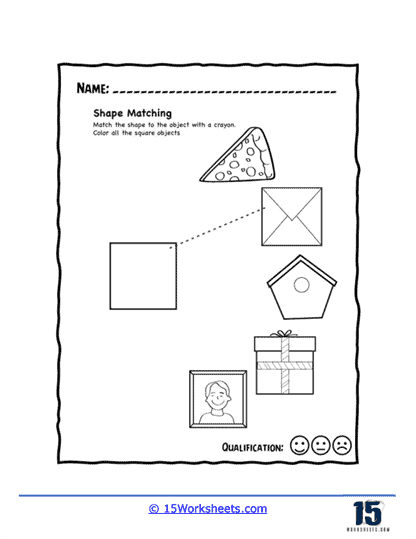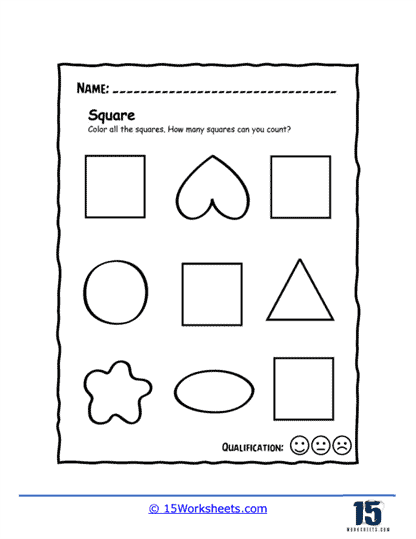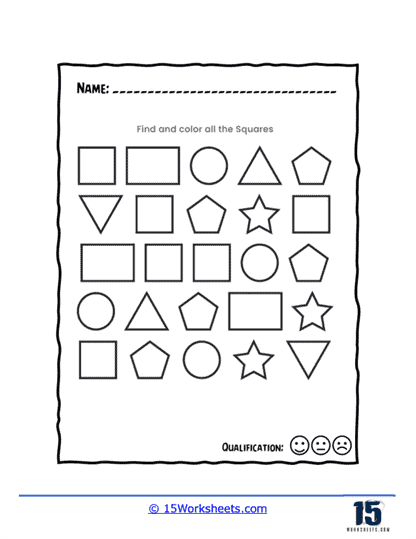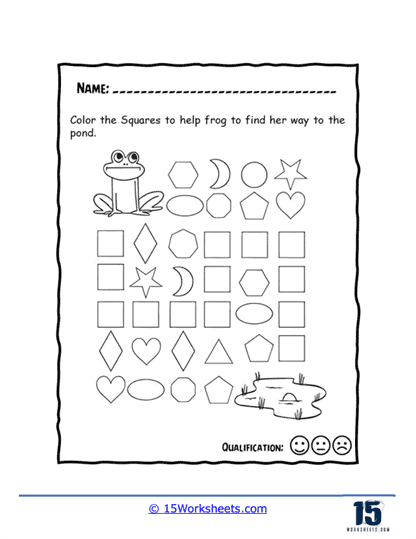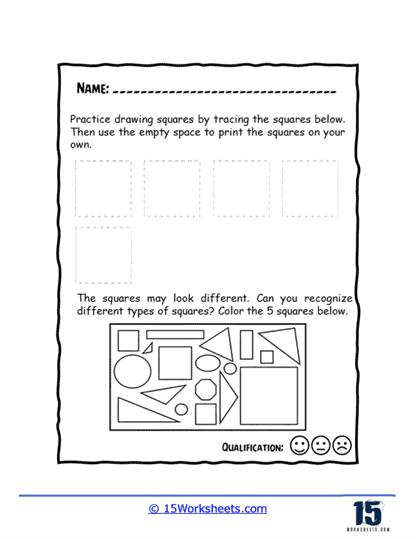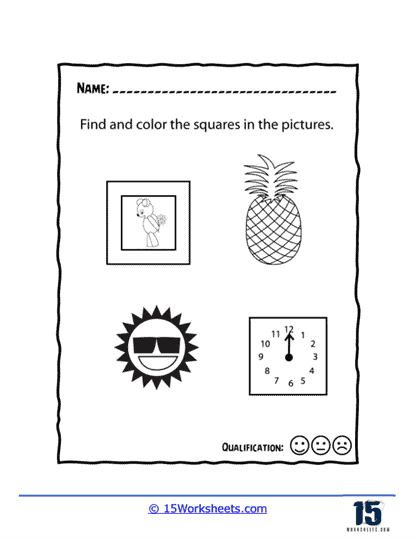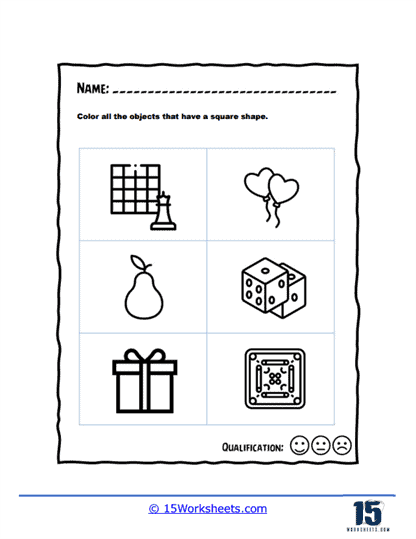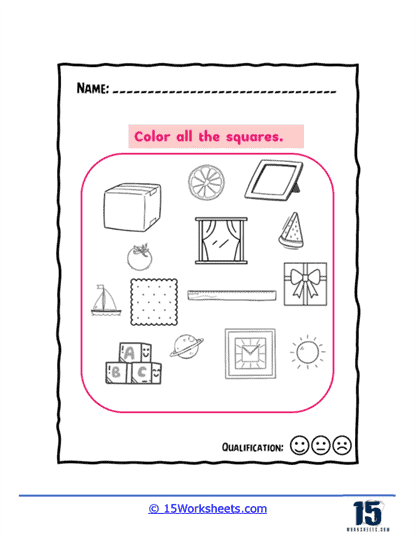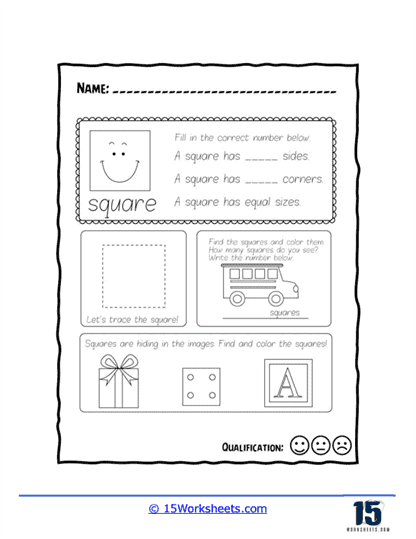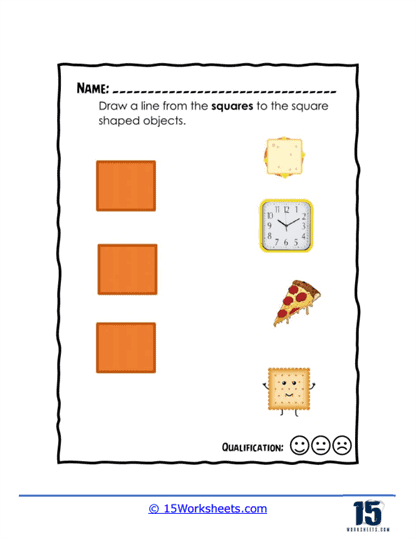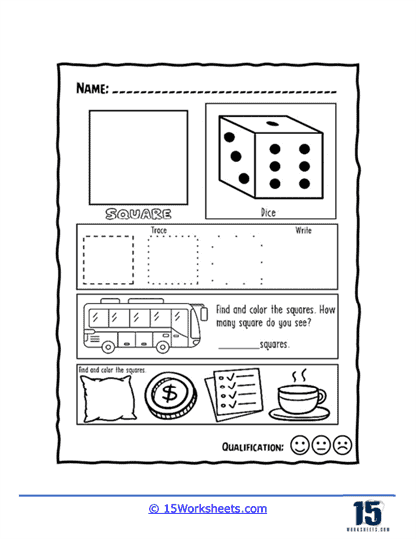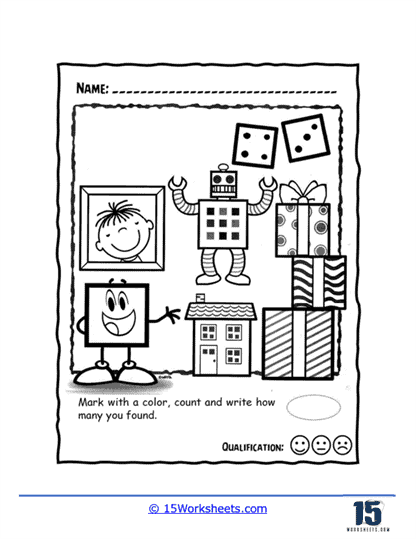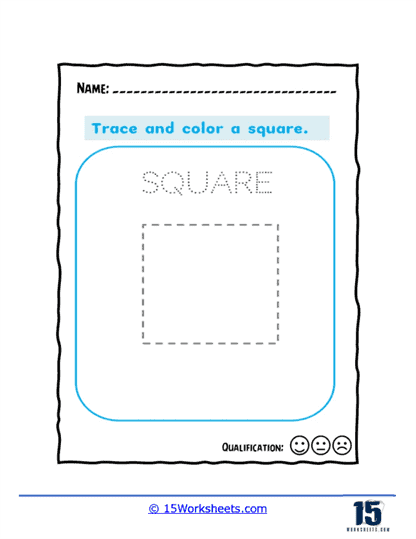Squares Worksheets
About These 15 Worksheets
So, imagine you’re in a spaceship, looking at the Earth from high up in space. It would look like a round sphere, right? Now, imagine you’re staring at your notebook. It’s more like a rectangle. And your phone? It might be a rectangle too, but with rounded edges. Our world is filled with a plethora of different shapes, and each of them has its own set of unique characteristics that makes it special.
Square Shape Worksheets are tools designed to help you understand one such shape – the square – in a fun and interactive way. But what is a square? It’s a shape with four equal sides and four right angles. And when I say ‘right angles,’ I mean angles that are exactly 90 degrees, like the corners of your notebook or a window pane.
The main purpose of these worksheets is to make learning about squares easy, enjoyable, and hands-on. Just like a storybook filled with colorful pictures can make reading more fun, these worksheets make learning about squares a lot more interesting.
Now, you may wonder, what can you find in these worksheets? Well, lots of engaging activities! You might find pages that ask you to identify squares among a group of different shapes. There could be puzzles where you need to find hidden squares within a larger image. Some worksheets may ask you to color all the squares you can find, while others might involve drawing or tracing squares.
They can also teach you about the properties of squares. Remember how I said that squares have four equal sides and four right angles? You might find exercises that help you explore these properties. For example, you might be asked to measure the sides of squares or calculate the area and perimeter.
The area is the total space inside the square, which you can find by multiplying the length of one side by itself. The perimeter, on the other hand, is the total distance around the square, which you can calculate by adding all four sides together. But since all the sides are equal in a square, you can just multiply one side by four!
And it doesn’t stop there. Some square shape worksheets might even incorporate squares into word problems or real-life scenarios. For example, they could ask you to design a square garden, and you’ll need to determine how much fencing you need (which is the perimeter), or how much space you have for planting flowers (which is the area).
The beauty of these worksheets is that they turn learning into a game. Instead of just memorizing facts, you’re actually doing things. You’re measuring, coloring, drawing, solving puzzles, and using your creativity. They allow you to see and understand squares in a way that’s much more impactful than simply reading about them in a textbook.
Dive right in! Take on those puzzles, answer those questions, color those squares. You’ll be having so much fun that you won’t even realize you’re learning. Plus, the skills you pick up – observation, analysis, problem-solving, and creativity – will be useful in so many other areas of your life, from other subjects at school to activities at home.
What Types Of Exercises Will You Find On These Worksheets?
This set of square worksheets were developed to help students learn about and practice working with the square shape. These worksheets can be used in the classroom or at home to reinforce understanding of the square shape, its properties, and its appearance in various contexts. Squares worksheets may include a variety of activities, such as:
- Tracing and Drawing – These exercises help students develop fine motor skills and become familiar with the shape of a square. They might be asked to trace over dotted squares or to draw squares of different sizes.
- Identification – Students might be given a sheet with various shapes and asked to circle or color in the squares. This helps them practice recognizing squares among other shapes.
- Coloring and Decorating – Younger students might be given a sheet with several squares to color or decorate, encouraging creativity while reinforcing the shape.
- Counting – Some of the worksheets include pictures with multiple squares and ask students to count the total number of squares in the image.
- Matching – Students may be asked to match squares based on size, orientation, or other properties, helping them understand similarities and differences among squares.
- Geometry and Measurement – For older students, worksheets could involve calculating the area, perimeter, or diagonal length of squares, understanding the relationship between the length of the sides and the area, or comparing squares to other shapes like rectangles or parallelograms.
These are just a few examples of the types of activities that might be included in squares worksheets. Teachers and parents can create their own worksheets or find pre-made ones online to suit their students’ needs and learning levels.

